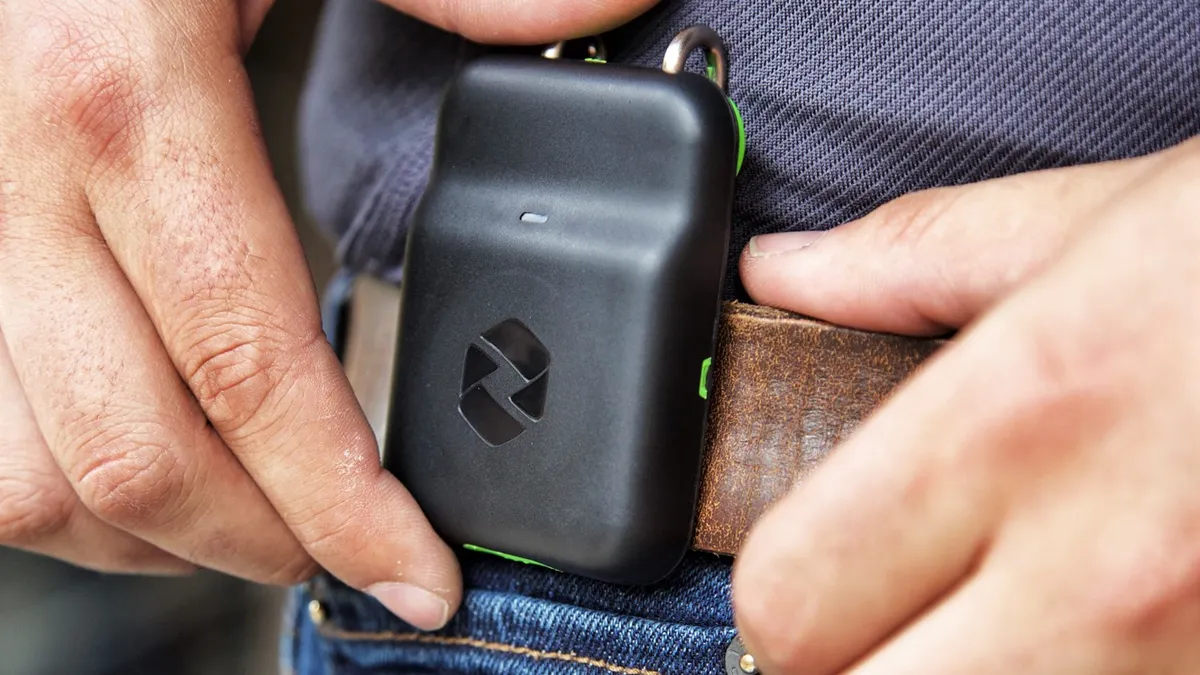Dive Brief:
- Wearable sensors not only can improve construction worker safety, but also can reduce costs by providing worker health data, according to SangHyun Lee, associate professor at University of Michigan’s Department of Civil and Environmental Engineering.
- Lee asserts that adding sensing technology on devices such as a wristbands can lower a company's insurance premiums and also empower workers to monitor their statuses to prevent accidents. Such wearable devices most frequently are used in the healthcare field, he said.
- Lee is conducting research about advance signal processing and machine learning techniques to derive useful information from wearables. This can include identifying stress, physical demands and risk perception levels from a wristband monitor. Sensors also track heart rate, skin temperature and electrical activity on skin. The professor has found construction companies, their workers and insurance companies all see the potential for safety improvement through wearables, but are looking for demonstrable cases of positive returns on investment. Older workers want to see how wearables are useful to them specifically, whereas younger workers understand the value and indicate they are more willing to wear them if coworkers also are using them.
Dive Insight:
With construction regularly ranking as one of the most dangerous professions, preventative measures for safety are of utmost concern. In a study Dodge Data & Analytics conducted last December, only 13% of respondents indicated they use wearables. Out of that number, however, 82% said wearables have had a positive impact on their jobsites. Research like Lee's could help boost popularity and adoption rates.
Massachusetts Institute of Technology researchers also are working on wearables. Its Safety++ suite of internet of things-enabled wearable technologies include jackets that alert workers to harmful toxins and decibel levels and shoes with embedded sensors that can detect if a worker is carrying a dangerously heavy load and even alert nearby workers to help lift the heavy object.
Apart from a big tie-up with Bosch Tools involving integrated tracking sensors on the jobsite, Triax Technologies have been rolling out Spot-r wearables, which include the Spot-r EvacTag — a real-time, construction-specific alert system for jobsite evacuations.
Helmets could also help save lives in this regard, not only through their most obvious hardware aspects, but via integrated software as well. Dubai-based startup WakeCap Technologies' forte involves sensors employing a mesh network that attach to construction helmets and, among other things, monitor facets such as wakefulness — or lack thereof — to prevent accidents that could occur from a drowsy worker, for instance.
Wearables aren't the only tech pieces aimed at improving worker safety. University of Waterloo researchers in Ontario, Canada, are using artificial intelligence to better understand how those in the skilled trades can reduce wear-and-tear injuries. By using motion sensors and AI, researchers found master masons don't follow standard ergonomic rules. Researchers are developing a system that uses sensor suits to give trainees immediate feedback and encourage them to modify movements.










